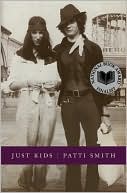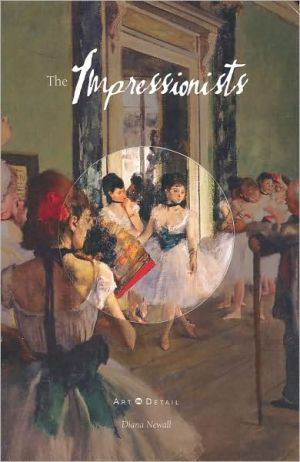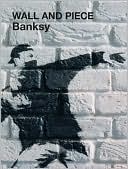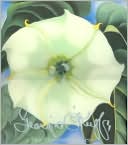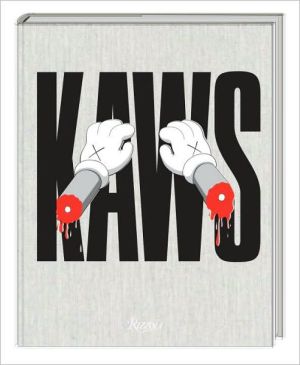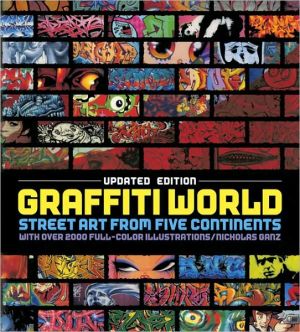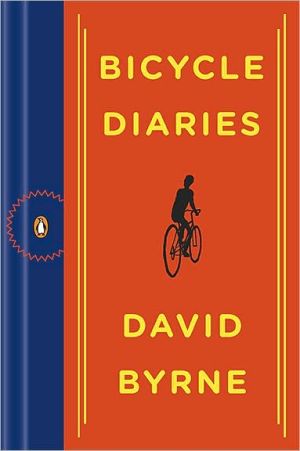The Most Arrogant Man in France: Gustave Courbet and the Nineteenth-Century Media Culture
The modern artist strives to be independent of the public's taste—and yet depends on the public for a living. Petra Chu argues that the French Realist Gustave Courbet (1819-1877) understood this dilemma perhaps better than any painter before him. In The Most Arrogant Man in France, the first comprehensive reinterpretation of Courbet in a generation, Chu tells the fascinating story of how, in the initial age of mass media and popular high art, this important artist managed to achieve an...
Search in google:
"This important book will instantly claim a place among the standard works on Courbet. Petra Chu has done an admirable job of tying together art, literature, and history to put Courbet in context in a way that has not been done before. She reveals a Courbet who is ambitious to succeed and who realizes that the new media of nineteenth-century France can be harnessed to his ambition. With this book, Chu brings to fruition a lifetime of studying Courbet and nineteenth-century French art."--Patricia Mainardi, City University of New York"Petra Chu has worked on Courbet throughout her long and productive career and this book is a capstone of her work, the product of considerable thought, insight, perception, and interpretation. Covering all phases of his evolution, from his earliest self-portraits to his late landscapes, she contextualizes Courbet in new ways and ties him to celebrity and media culture so that we can see how he thought as well as why he reacted in his work as he did. This is no small achievement."--Gabriel P. Weisberg, University of Minnesota"The Most Arrogant Man in France is an original study of Courbet's entrepreneurial methods, and as such distinguishes itself from the rest of the voluminous recent writing on the artist. Petra Chu carefully sifts through Courbet's contacts with the press, newly investigates his patronage, and speculates about his appeal to the wider public. The book will interest not just art historians but also general readers since it dissects the intelligence and entrepreneurial flair of a canonical artistic personality who anticipates artists such as Dalí and Warhol."--Albert Boime, UCLAPublishers WeeklyIn this insightful book, Chu (who edited and translated Gustave Courbet's letters) examines how the painter (1819 1877) used the press to market his work. Courbet, who once called himself "the proudest and most arrogant man in France," relished any kind of publicity and courted journalists, critics and editors who reviewed his work and published letters in which he explained his paintings and expounded his antiestablishment philosophy. He claimed that art could not be taught and that it should not be controlled by the state, and his paintings often attacked such institutions as the church and the academy. Analyzing many of these paintings, Chu shows how their subtly subversive content caused public debate while eluding the censors. Courbet's proudest moment came in 1870, when he refused a knighthood cross in the French Legion of Honor and published a letter saying that the state was "incompetent in matters of art." But facing punishment for participating in the riots of 1871, he fled to Switzerland and died there several years later. Chu's brilliant study of Courbet's paintings and marketing strategies sheds much light on his work and the artistic milieu of the 19th century. B&w and color illus. (May)Copyright 2007 Reed Business Information
The Most Arrogant Man in France\ Gustave Courbet and the Nineteenth-Century Media Culture \ \ By Petra ten-Doesschate Chu \ Princeton University Press\ Copyright © 2006 Princeton University Press\ All right reserved.\ \ \ \ Introduction\ In Les Règles de l'art, published in 1992, French sociologist Pierre Bourdieu defines the artistic "field" of mid-nineteenth-century France as one in the process of formation. He attributes its instability to the dramatically altered relation between artist and public, itself the result of the vast political, social, and economic changes that had taken place in France since the Revolution. Comparing the artist's new position with that of the longtime family servant who suddenly has to compete in the labor market, Bourdieu stresses its dual effect of alienation and liberation. \ Operating in an artistic field in the process of formation, nineteenth-century artists, according to Bourdieu, were in a "double bind." They were confronted with two equally unacceptable alternatives: one was artistic autonomy at the risk of physical and moral "degradation"-a permanent vie de bohème marked by "material and moral misery, sterility and resentment"; the other, equally degrading, submission to the dominant culture.\ Though it is claimed to encompass the entire artistic field, Bourdieu's book is clearly written from a literary viewpoint. For writers, indeed, the mid-nineteenth century (roughly from 1830 to 1870) was a period of radical change-the simultaneousresult of the rapid expansion of the press and of an ever-growing supply of young men (and some women) seeking to embark on writers' careers. As for visual artists, their field had begun to change much earlier, owing to the introduction of public exhibitions in the eighteenth century and the disappearance of royal, aristocratic, and church patronage after the French Revolution. As Oskar Bätschmann and others before him have pointed out, the artistic dilemma that Bourdieu so powerfully describes had been a reality for visual artists since the end of the eighteenth century, particularly in France and England. Devoid of patronage, artists were dependent on direct sales-and this without the benefit of middlemen, as contemporary art dealers and galleries did not come into their own until the 1860s and 1870s. The main means for late-eighteenth- and early nineteenth-century artists to reach out to the public was through government-sponsored exhibitions, hence Bätschmann's term for them-"exhibition artists."\ The history of modern art, as Bätschmann has shown, may be written as a story of the ways in which artists have negotiated their new autonomous position in the postrevolutionary world. Within that story, Gustave Courbet played a crucial part. He may well have been the first one not merely to acknowledge but also to accept the complexity of the position of the modern artist-at once autonomous (free to create what he or she wants) and dependent on society for a living; simultaneously scornful of the public and craving publicité; both artistic genius, in the full Romantic sense of the term, and purveyor of commodities for the bourgeois home. To reconcile these extremes of the modern artist's position, Courbet, as I intend to show in this book, devised new ways to structure his oeuvre and developed a unique exhibition and marketing strategy. If, in the end, his tactics backfired, as the artist was forced into exile and his work plagiarized by numerous hack painters making money off his reputation, they were not the less original and forward-looking for it.\ Courbet's artistic course of action was modeled on that of contemporary writers, who were busy renegotiating their own position as autonomous artists in a field that was radically transformed by the rise of the media from the 1830s onward. It was modeled as well on the media themselves, which, in their makeup and contemporary content, provided an example to Courbet for the shape and nature of his oeuvre. It was a course of action that was crucially marked by the notion of publicité and by a new awareness of the public as heterogeneous in its interests and tastes, but one that was informed as well by a variety of revolutionary theories about the role and the place of artist in society.\ Born in Ornans, a small village in the outlying Franche-Comté region, Courbet came to Paris in 1839. For a brief time, he took the smoothly paved road to public success. He studied with the popular Charles von Steuben, who might have helped him gain access to the Salon and the coveted prizes and honors that would have guaranteed him state purchases (perhaps even official commissions) and a fashionable clientele. But he abandoned this course as he became acquainted with, and soon entrenched in, the Parisian bohemia. After several years of "material and moral misery" (to use Bourdieu's words) and facing the prospect of "sterility and resentment," Courbet began to rethink his position. Descended from a family of farmers who, through hard work, strategic marriages, and the careful buying and selling of land, had achieved the comfortable status of rentiers, he was raised with the notion that money is the paramount measure of success. How could he negotiate this premise with his quest for artistic autonomy? No artist had yet traced a career path that allowed complete artistic independence and financial success at the same time. Courbet looked at the example of contemporary writers who, taking advantage of the enormous expansion of the press, found in it both a means to make a living and an avenue to gain publicity for their literary undertakings. Moreover, he learned from the example of his writer friends a "rhetoric of independence." By this I mean ways to assert an autonomous, even subversive, position in such a manner that it could not be rejected or ignored but, in its very ambiguity, elicited a maximum amount of discussion. Finally, he learned to be aware of his public, specifically the new bi-gendered public of the nineteenth century, and to diversify his production, not only by distinguishing between what Bourdieu calls a production artistique and ouvrière, but also by practicing all available genres of the nineteenth century, from history painting to still life.\ Chapter 1 begins with a rapid overview of the spectacular expansion of the press in nineteenth-century France, the beginning of which coincided almost exactly with Courbet's arrival in Paris. It then turns to the effect that expansion had on writers and literary production, focusing on the phenomenon of "industrial literature," the success of which was measured not in terms of traditional honors and laurels but of monetary revenue. Courbet's entrance into the milieu of young, aspiring writers whose careers were to be made in the press is described in detail. His deliberate choice of the literary café rather than the academic atelier as his training ground is related to the artist's preoccupation with publicité, of which it was both cause and effect. Finally, a broad parallel is drawn between Courbet's art and the nineteenth-century press by focusing on their common goal of giving expression to the here and now.\ Chapters 2 and 3 deal with two important strategies of publicité or self-promotion that Courbet learned through his friendships with writers for the press. One was the "pose." It was a way to invent and create a public persona for himself-both through his art, in a series of carefully staged self-portraits, and in real life, by playing up certain physical and psychological characteristics that resonated with his journalist friends who were his vehicle to publicity. The other was what one may call a "strategy of association." It was a way to lend dimension to his public persona by advertising the company he kept. This he did through a series of portraits of his contemporaries that became his private pantheon-a gallery of colleagues that he admired and that, in turn, defined his persona.\ In chapter 4, the "rhetoric" of Courbet's major Salon paintings is analyzed. The pronounced presence of irony, especially in his early works, is linked to the use of this same rhetorical form in the press, where it served as a weapon against censorship and as a defense mechanism in the perpetual struggle of writers against the realities of daily life. Courbet's use of other forms of rhetoric, notably allegory, metonymy, and satire, is also discussed.\ The subject of chapter 5 is Courbet's numerous paintings of women, which are studied in the context of contemporary writers' concern with addressing a bi-gendered audience. Several of Courbet's paintings are shown to display a form of bisextuality that has its equivalent in the works of Honoré de Balzac, George Sand, and Gustave Flaubert.\ In the concluding chapter, Courbet's structuring and marketing of his oeuvre is linked to the structuring and marketing of the contemporary newspaper. Special attention is paid to Courbet's landscape paintings and the way in which he "packaged" and marketed nature so as to reach out to the largest possible public.\ Finally, in the epilogue of the book, the tragic backfiring of Courbet's artistic course of action is described. The highly visible "bad boy" image that Courbet had worked so hard to cultivate began to work against him as soon he rendered himself vulnerable through his participation in the Commune and the dismantling of the Vendôme Column.\ (Continues...)\ \ \ \ \ Excerpted from The Most Arrogant Man in France by Petra ten-Doesschate Chu Copyright © 2006 by Princeton University Press. Excerpted by permission.\ All rights reserved. No part of this excerpt may be reproduced or reprinted without permission in writing from the publisher.\ Excerpts are provided by Dial-A-Book Inc. solely for the personal use of visitors to this web site. \ \
Acknowledgments ixIntroduction 1Courbet and the Press 5Posing 17Courbet's Pantheon 45Salon Rhetoric 75Bisextuality 114Packaging and Marketing Nature 138Epilogue 170Notes 175Bibliography 215Photography Credits 229Index 231
\ CAA Reviews[W]ell-researched, perceptive, and beautifully illustrated text. . . . Chu's book is an important new contribution to the field of nineteenth-century art. It will undoubtedly become a key text for scholars grappling with the mysteries and ambiguities at the heart of Courbet's work.\ — Gretchen Sinnett\ \ \ \ \ New Yorker - Peter Schjeldahl\ Chu details the rise, the fall, and the tireless machinations of art's first recognizably modern careerist.... In Chu's telling, Courbet seems to have done nothing without an eye to the main chance. He took pains to advertise his prominence in republican literary and artistic circles—the distinguished as well as the delectably louche. He made much of knowing the celebrated anarchist philosopher Pierre-Joseph Proudhon ('Property is theft!'), upon whose death, in 1865, he made a nostalgic portrait that was not only splendid but pantingly opportunistic.... Chu's most original analysis of Courbet's reputation in his day concerns its mixed effects on a newly 'bi-gendered' public.\ \ \ New York Review of BooksWill surely become essential for all future Courbet studies...The title of Chu's book is self-explanatory, but in the exploration of her theme, she inevitably casts light on the artist's character.\ \ \ \ \ Times Literary Supplement[Chu's] enjoyable account shows how little we know about Courbet's intentions and procedures....[Her] richly illustrated study suggests a mind whose curious complexities were expressed only in paint.\ \ \ \ \ Seven Oaks MagazineA study of how Courbet wisely perceived himself to be witnessing new technologies that could, if properly integrated and exploited, further rather than threaten his vision.\ \ \ \ \ Washington TimesIn The Most Arrogant Man in France Petra Ten-Doesschate Chu takes up Courbet's relationship with the growing number of newspapers and journals of 19th-century France, and he shows how this clever artist made use of a very willing media to make his name a household word in France and elsewhere in Europe, and to increase the sales of his paintings...The best part of Ms. Chu's amply illustrated book deals with Courbet's strongest work. In his series of self-portraits...she traces Courbet's shedding of the Romantic conventions of his youth and his development (in his own words) into 'a man confident in his principles, a free man.'\ \ \ \ \ ForeWordPetra Chu, a renowned expert on Courbet and editor of the Letters of Gustave Courbet (1992), presents a fascinating portrait of the media-conscious young artist....Chu's well-illustrated book offers readers not only a deeper understanding of this extraordinarily versatile activist-artist but also of the complex social and economic milieus in which he worked.\ \ \ \ \ ChoiceWith this book, Chu adds to her reputation as a leading scholar of Courbet and of 19th-century French art in general...Well illustrated and a pleasure to read, Chu's book is sure to inspire further research on the role of the popular press in the development of modern art.\ \ \ \ \ Art Bulletin[Chu] seeks to replace the long-standing image of the artist as a heroic artiste engagé with a more complicated picture of the man and his art . . . Chu's book holds out the promise of a fascinating rereading of the artist and his work. . . . What we are left with, by the end of Chu's book, is a picture of Courbet as a cynical operator, ready to exploit the press and the burgeoning audience for provocative, antiestablishment art, and who pursues fame for fame's sake.\ \ \ \ \ CAA Reviews[W]ell-researched, perceptive, and beautifully illustrated text. . . . Chu's book is an important new contribution to the field of nineteenth-century art. It will undoubtedly become a key text for scholars grappling with the mysteries and ambiguities at the heart of Courbet's work.\ \ \ \ \ New YorkerChu details the rise, the fall, and the tireless machinations of art's first recognizably modern careerist.... In Chu's telling, Courbet seems to have done nothing without an eye to the main chance. He took pains to advertise his prominence in republican literary and artistic circles—the distinguished as well as the delectably louche. He made much of knowing the celebrated anarchist philosopher Pierre-Joseph Proudhon ('Property is theft!'), upon whose death, in 1865, he made a nostalgic portrait that was not only splendid but pantingly opportunistic.... Chu's most original analysis of Courbet's reputation in his day concerns its mixed effects on a newly 'bi-gendered' public.\ — Peter Schjeldahl\ \ \ \ \ New York Review of BooksWill surely become essential for all future Courbet studies...The title of Chu's book is self-explanatory, but in the exploration of her theme, she inevitably casts light on the artist's character.\ — John Golding\ \ \ \ \ Times Literary Supplement[Chu's] enjoyable account shows how little we know about Courbet's intentions and procedures....[Her] richly illustrated study suggests a mind whose curious complexities were expressed only in paint.\ — Graham Robb\ \ \ \ \ Seven Oaks MagazineA study of how Courbet wisely perceived himself to be witnessing new technologies that could, if properly integrated and exploited, further rather than threaten his vision.\ — George Fetherling\ \ \ \ \ Washington TimesIn The Most Arrogant Man in France Petra Ten-Doesschate Chu takes up Courbet's relationship with the growing number of newspapers and journals of 19th-century France, and he shows how this clever artist made use of a very willing media to make his name a household word in France and elsewhere in Europe, and to increase the sales of his paintings...The best part of Ms. Chu's amply illustrated book deals with Courbet's strongest work. In his series of self-portraits...she traces Courbet's shedding of the Romantic conventions of his youth and his development (in his own words) into 'a man confident in his principles, a free man.'\ — Stephen Goode\ \ \ \ \ ForeWordPetra Chu, a renowned expert on Courbet and editor of the Letters of Gustave Courbet (1992), presents a fascinating portrait of the media-conscious young artist....Chu's well-illustrated book offers readers not only a deeper understanding of this extraordinarily versatile activist-artist but also of the complex social and economic milieus in which he worked.\ — Peter Skinner\ \ \ \ \ ChoiceWith this book, Chu adds to her reputation as a leading scholar of Courbet and of 19th-century French art in general...Well illustrated and a pleasure to read, Chu's book is sure to inspire further research on the role of the popular press in the development of modern art.\ — D.E. Gliem\ \ \ \ \ Art Bulletin[Chu] seeks to replace the long-standing image of the artist as a heroic artiste engagé with a more complicated picture of the man and his art . . . Chu's book holds out the promise of a fascinating rereading of the artist and his work. . . . What we are left with, by the end of Chu's book, is a picture of Courbet as a cynical operator, ready to exploit the press and the burgeoning audience for provocative, antiestablishment art, and who pursues fame for fame's sake.\ — Aruna D'Souza\ \ \ \ \ Publishers WeeklyIn this insightful book, Chu (who edited and translated Gustave Courbet's letters) examines how the painter (1819–1877) used the press to market his work. Courbet, who once called himself "the proudest and most arrogant man in France," relished any kind of publicity and courted journalists, critics and editors who reviewed his work and published letters in which he explained his paintings and expounded his antiestablishment philosophy. He claimed that art could not be taught and that it should not be controlled by the state, and his paintings often attacked such institutions as the church and the academy. Analyzing many of these paintings, Chu shows how their subtly subversive content caused public debate while eluding the censors. Courbet's proudest moment came in 1870, when he refused a knighthood cross in the French Legion of Honor and published a letter saying that the state was "incompetent in matters of art." But facing punishment for participating in the riots of 1871, he fled to Switzerland and died there several years later. Chu's brilliant study of Courbet's paintings and marketing strategies sheds much light on his work and the artistic milieu of the 19th century. B&w and color illus. (May)\ Copyright 2007 Reed Business Information\ \


